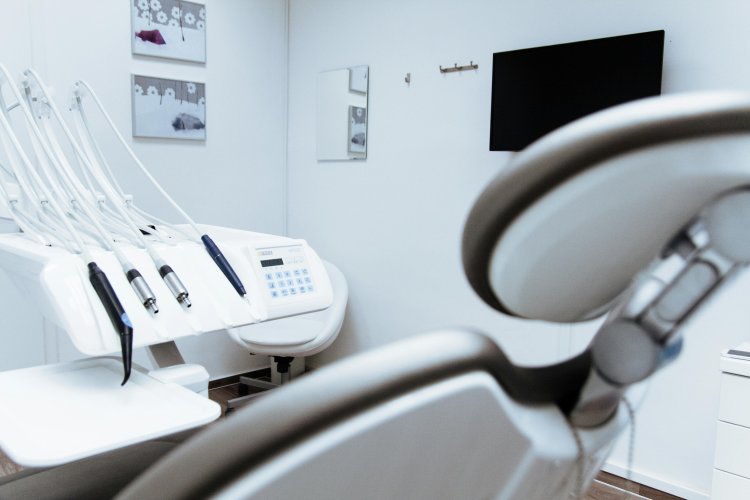Telehealth Technologies: Platforms and Devices for Virtual Consultations
Telehealth Technologies: Platforms and Devices for Virtual Consultations Their pros and cons.

Table of Contents:
1. Introduction
2. Telehealth
3. Telehealth Platforms
· Video Conferencing Platforms
· Telemedicine Apps
· Remote Patient Monitoring Systems
4. Telehealth Devices
· Desktop and Laptop Computers
· Smartphones and Tablets
· Wearable Health Monitors
5. Benefits of Telehealth Technologies
6. Challenges and Considerations
7. Regulatory and Ethical Implications
8. Future Directions of Telehealth
9. Conclusion
1: Introduction:
Telehealth technologies have revolutionized healthcare delivery, allowing patients to connect with healthcare providers remotely through virtual consultations. This blog explores various telehealth platforms and devices used for virtual consultations, their benefits, challenges, regulatory considerations, and future directions.
2: Understanding Telehealth:
Telehealth encompasses a broad range of technologies and services that enable remote healthcare delivery, including virtual consultations, remote monitoring, and telemedicine services. Telehealth allows patients to access healthcare services from the comfort of their homes using digital devices and internet connectivity.
3: Telehealth Platforms:
Telehealth platforms facilitate virtual consultations between patients and healthcare providers. Some common types of telehealth platforms include:
· Video Conferencing Platforms: Platforms such as Zoom, Microsoft Teams, and Google Meet enable real-time video and audio communication between patients and healthcare providers.
· Telemedicine Apps: Mobile apps like Amwell, Teladoc, and Doctor On Demand connect patients with licensed healthcare professionals for virtual consultations, diagnosis, and treatment.
· Remote Patient Monitoring Systems: These systems enable healthcare providers to monitor patients' vital signs, symptoms, and health data remotely using wearable sensors, home-based monitoring devices, and cloud-based platforms.
4: Telehealth Devices:
Various devices are used to facilitate virtual consultations and remote monitoring in telehealth, including:
· Desktop and Laptop Computers: Patients and healthcare providers can use desktop or laptop devices with webcams and mics to conduct virtual consultations via video conferencing platforms.
· Smartphones and Tablets: Mobile devices like smartphones and tablets enable patients to access telehealth services from anywhere, making healthcare services more accessible and convenient.
· Wearable Health Monitors: Wearable devices such as smartwatches, fitness trackers, and medical-grade sensors enable continuous monitoring of vital signs, activity levels, sleep patterns, and other health metrics.
5: Benefits of Telehealth Technologies:
Telehealth technologies offer several benefits for patients, healthcare providers, and healthcare systems:
· Improved Access to Care: Telehealth eliminates geographic barriers and enables patients to access healthcare services regardless of their location, improving access for rural and underserved populations.
· Convenience and Flexibility: Virtual consultations allow patients to receive care from the comfort of their homes, saving time and reducing the need for travel and waiting room visits.
· Continuity of Care: Telehealth facilitates ongoing communication between patients and healthcare providers, promoting continuity of care and early intervention for managing chronic conditions and preventing complications.
· Cost Savings: Telehealth can lower healthcare costs by reducing hospital readmissions, emergency room visits, and unnecessary office visits, while also increasing operational efficiency for healthcare providers.
6: Challenges and Considerations:
Despite its benefits, telehealth also presents challenges and considerations, including:
· Digital Divide: Socioeconomic disparities in access to technology and internet connectivity may limit the adoption of telehealth services among certain populations, exacerbating healthcare inequities.
· Privacy and Security Concerns: Transmitting sensitive health information over digital networks raises concerns about data security, privacy breaches, and compliance with regulatory requirements such as HIPAA.
· Technological Barriers: Technical issues like poor internet connectivity, software glitches, and user interface design may impede the usability and effectiveness of telehealth platforms and devices.
· Licensure and Reimbursement Policies: Regulatory barriers related to licensure, reimbursement, and insurance coverage vary by jurisdiction and can impact the availability and affordability of telehealth services.
7: Regulatory and Ethical Implications:
Regulatory and ethical considerations surrounding telehealth include:
· Licensure and Credentialing: Healthcare providers must adhere to licensure requirements and professional standards when delivering telehealth services across state or international borders.
· Informed Consent: Patients should be fully informed about the purpose, risks, and benefits of telehealth consultations and have the right to consent or decline participation based on their preferences and values.
· Confidentiality and Data Security: Telehealth platforms and devices must comply with regulatory standards for protecting patient privacy, securing electronic health records, and preventing unauthorized access to sensitive health information.
8: Future Directions of Telehealth:
The future of telehealth holds promise for further innovation and expansion, with key areas of focus including:
· Integration with Artificial Intelligence (AI): AI-powered tools and algorithms can enhance telehealth services by analyzing patient data, providing clinical decision support, and personalizing treatment recommendations.
· Virtual Reality (VR) and Augmented Reality (AR): Immersive technologies like VR and AR have the potential to transform telehealth by enabling virtual simulations, remote surgical training, and immersive patient education experiences.
· Remote Surgical Robotics: Advances in robotic surgery and remote-controlled surgical systems enable surgeons to perform minimally invasive procedures and complex surgeries from remote locations, expanding access to specialized care.
9: Conclusion:
Telehealth technologies have emerged as a vital tool for delivering healthcare services remotely, offering convenience, accessibility, and cost-effectiveness for patients and healthcare providers alike. By leveraging telehealth platforms and devices, healthcare organizations can overcome geographical barriers, improve access to care, and enhance patient outcomes. As telehealth continues to evolve, it is essential to address challenges related to privacy, security, and regulatory compliance to ensure the ethical and effective delivery of telehealth services. With ongoing innovation and collaboration, telehealth has the potential to revolutionize healthcare delivery and improve health outcomes for individuals and communities worldwide.
What's Your Reaction?





















